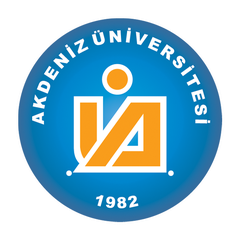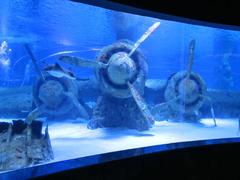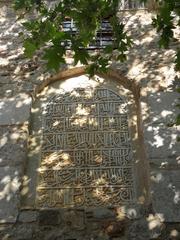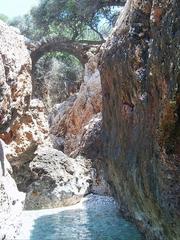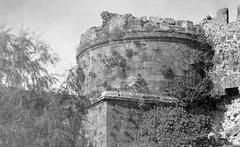Gagae Antalya Turkey: Visiting Hours, Tickets, and Guide to Historical Sites
Date: 14/06/2025
Introduction
Gagae, an ancient city nestled on the southeastern coast of Lycia in today’s Antalya Province, Turkey, offers a unique journey into the heart of Lycian civilization. Located near Kumluca, this lesser-known archaeological site is characterized by its tranquil setting, remarkable ruins, and rich history shaped by Lycian, Hellenistic, and Roman influences. Once a hub of maritime trade renowned for its prized “Gagates lapis” (jet stone), Gagae now welcomes culturally curious travelers looking to explore Antalya’s off-the-beaten-path historical treasures (Wikipedia - Gagae; All About Turkey - Lycia).
This detailed guide provides everything you need to plan a rewarding visit to Gagae, including historical context, archaeological highlights, cultural significance, practical visitor information, accessibility tips, nearby attractions, and advice for responsible exploration. Whether you are a history enthusiast or a traveler seeking authenticity, Gagae promises an immersive glimpse into Turkey’s ancient past.
1. Geographic and Historical Context
Gagae (also spelled Gagai) lies near Kumluca in Antalya Province, on the rugged Teke Peninsula. Its strategic coastal location once facilitated maritime trade throughout the Mediterranean, linking Lycia with neighboring cultures (Wikipedia - Lycia; Peter Sommer Travels). Lycia itself was a region famed for its mountain fortresses, independent spirit, and unique blend of Anatolian and Hellenistic traditions (All About Turkey - Lycia).
2. Archaeological Discoveries and Site Features
Excavations at Gagae have revealed:
- Upper and Lower Acropolises: Defensive strongholds and civic centers.
- City Walls and Foundations: Evidence of urban planning and Rhodian colonial influence.
- Artifacts: Pottery, inscriptions, and architectural remnants from Lycian, Hellenistic, and Roman periods.
- Tombs and Sarcophagi: Reflecting Lycian funerary traditions, though less monumental than neighboring cities (Academia.edu).
3. Historical and Cultural Significance
- Lycian League Membership: Gagae participated in the ancient Lycian League, a pioneering democratic confederation.
- Trade and Economy: The city was famed for mining and trading Gagates (jet stone), a semi-precious mineral prized for jewelry and amulets in antiquity.
- Cultural Exchange: Gagae reflects a synthesis of Lycian, Greek, and Roman artistic and architectural elements.
- Religious Life: Archaeological evidence indicates sanctuaries and cultic spaces, though specific deities remain unclear (Peter Sommer Travels).
4. Visiting Gagae: Practical Information
Visiting Hours and Seasons
- Open Year-Round: Accessible during daylight, typically 8:00 AM–sunset.
- Best Time to Visit: Spring (April–June) and autumn (September–October) offer mild weather and fewer crowds.
Ticket Prices
- Free Entry: No formal ticketing or entry fee; open-access archaeological site (VisitTurkey.in).
Accessibility and Facilities
- Terrain: Mountainous and uneven; not wheelchair accessible.
- Facilities: No restrooms, cafes, or interpretive signage on-site.
- Preparation: Bring water, snacks, sturdy footwear, sun protection, and offline navigation tools.
How to Get There
- From Antalya: 90 km west; 1.5-hour drive via D400 coastal highway.
- Public Transport: Buses from Antalya to Kumluca, then taxi or rental car to site.
- Hiking: The Lycian Way trail passes near Gagae for adventurous visitors (VisitTurkey.in).
5. Travel Tips and Safety
- Visit in Groups: Inform someone of your plans; avoid solo visits if possible.
- Wildlife: Be cautious of snakes and insects, especially in warmer months.
- Responsible Tourism: Do not disturb or remove artifacts; follow marked paths and avoid littering.
6. Guided Tours and Photography
- Guided Tours: Occasionally available via local operators in Kumluca and Antalya, often combined with other Lycian sites (AlanyaGroup.com).
- Photography: Best light at sunrise or sunset; respect the integrity of ancient structures.
7. Nearby Attractions
- Olympos: Extensive ancient ruins and scenic beach.
- Limyra: Monumental tombs and Roman theater (Onedio).
- Arykanda: Hillside city with stadium, baths, and theater (TR Wolf Transfer).
- Myra and Demre: Rock-cut tombs, Roman theater, and the ancient port of Andriake.
- Adrasan Beach: Quiet bay for swimming and watersports.
- Lycian Way: Renowned hiking trail linking historic and natural sites.
8. Accommodation and Dining
- Kumluca: Offers hotels, boutique guesthouses, and budget hostels.
- Local Cuisine: Turkish specialties, seafood, and Mediterranean dishes in Kumluca, Finike, and Demre (TourstoTurkey.net).
9. Local Culture and Festivals
- Rural Life: Citrus farming, weekly markets, and warm hospitality.
- Cuisine: Try piyaz, kuzu tandir, baklava, and local seafood.
- Festivals: Citrus and folk music festivals held in nearby towns; ancient theaters host concerts and performances (Welcome Antalya).
10. Essential Visitor Tips
- Language: Turkish is the main language; English is spoken in tourist areas.
- Currency: Turkish Lira (TRY); cash preferred in rural locations.
- Connectivity: Mobile coverage may be limited at the site; download maps in advance.
- Museum Card: Not needed for Gagae, but useful for other sites in Antalya (Antalya Tourist Information).
11. Environmental Considerations
- Preservation: Stay on marked paths, avoid picking plants, and support local conservation efforts.
- Leave No Trace: Carry out all trash and minimize your impact on the natural environment.
12. Frequently Asked Questions (FAQ)
Q: What are the visiting hours for Gagae?
A: Open during daylight hours, typically 8:00 AM to sunset, year-round.
Q: Is there an entry fee?
A: No, the site is free to visit.
Q: How do I get there?
A: By car from Antalya or Kumluca, or via local bus/taxi combinations.
Q: Are guided tours available?
A: Occasionally, through local operators; check in Kumluca or Antalya.
Q: Are facilities available at Gagae?
A: No; bring your own supplies and plan accordingly.
13. Visuals and Media
- [Insert map showing Gagae’s location near Kumluca, Antalya]
- [Include high-quality images of Gagae ruins, acropolis, and surrounding nature]
- [Embed virtual tour link if available]
14. Internal Links
15. Conclusion
Gagae is a hidden gem among Antalya’s historical sites, offering an authentic and peaceful window into the ancient Lycian world. Its undisturbed ruins, rich trade history, and stunning natural backdrop make it ideal for travelers seeking a blend of culture, history, and tranquility. With easy access to nearby attractions and the hospitality of local communities, Gagae serves as both a destination and a gateway for deeper exploration of Turkey’s Mediterranean coast.
To enhance your visit, download the Audiala app for offline maps, audio guides, and the latest travel updates. Always check current information before traveling, respect local customs, and enjoy your journey through one of Turkey’s most captivating ancient landscapes.
References
- Wikipedia - Gagae
- All About Turkey - Lycia
- VisitTurkey.in - Kumluca Antalya
- Peter Sommer Travels - Ancient Lycia
- AlanyaGroup.com - Ancient Cities in Antalya
- TR Wolf Transfer - Ancient Cities of Antalya
- Welcome Antalya - Antalya Turkey Travel Guide
- Onedio - Limyra
- Academia.edu - Rediscovery of GAGAE
- TourstoTurkey.net - Turkey Comprehensive Guide
- Food and Travel Utsav - Must Visit Attractions Antalya
- Holidify - Antalya
- Antalya Tourist Information - Side Old Town
- Antalya Tourist Information - Archaeological Museums
For the latest travel tips and updates, follow us on social media and download our official app.
